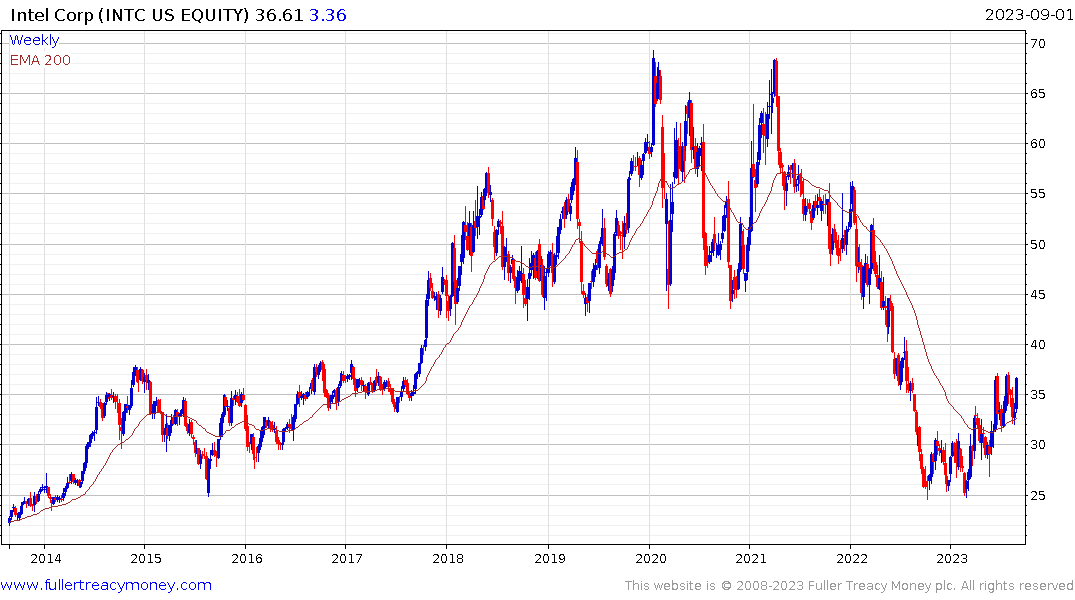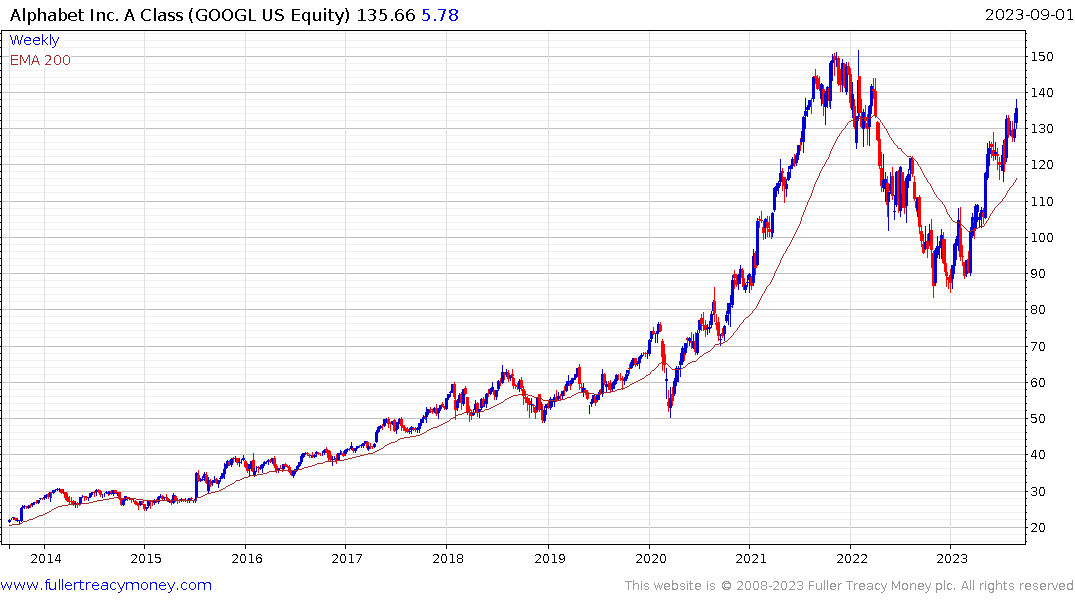Huawei Chip Shows US Curbs Are Porous, Not Useless
This article from Bloomberg may be of interest. Here is a section:
It’s highly unlikely Chinese chipmakers can squeeze more out of old tools to get them beyond 5nm, which means they’ll be stuck while foreign rivals continue to advance. And if they do make further breakthroughs, the US and its allies have plenty of ways to tighten up their curbs, including broadening the scope of the equipment ban and adding materials to the list.
Predictability in the semiconductor sector ended in 2017 when the International Technology Roadmap for Semiconductors was last published. Instead of 18 months it now takes around 30 months to deliver the next generation of chips. That’s what the end of Moore’s Law amounts to.
As the physical limits of silicon are approached, the difficulty of cooling a chip becomes exponentially more difficult. A silicon atom has a diameter of around 0.2nm, so transistors with a diameter of 3nm are already very close to the physical limits of the atom. This has created a bottleneck in chip innovation because totally new technology will be required to deliver fresh innovation.
The reason new computers come with both a CPU (central processing unit) and GPU (graphics processing unit) reflects that bottleneck. Nvidia’s success is based on providing chips designed specifically for a dedicated task. That limits potential but maxes out utility for that single use case. The model works well because most chips are only used for a small number of similar functions.
This limitation also helps to emphasise why companies have been slow to invest in manufacturing capacity. Nvidia enjoys a profit margin of over 30% because it outsources manufacturing. Taiwan Semiconductor historically had a margin of around 10% but that is currently over 40% because of its competitive advantage, coupled with the pandemic and AI-fuelled surge in demand.
China is currently investing heavily in manufacturing capacity of older chips. Once those fabs are in full swing they will flood the market with cheap supply. That is aimed both at ensuring ample domestic supply and compressing margins for competitors. The ultimate aim is to drive existing supply outside China into an unprofitable position so they are uneconomic to sustain. That takes aim at a part of the global supply chain which has previously been ignored.
The realization that chip manufacturing has always been heavily cyclical and that chips are totally essential to the continuation of modern life has had a direct influence of government policy everywhere. Governments are taking a strong interest in providing funds for building fabs. The singular reliance on the economics of production are no longer sufficient to ensure supply.
At the same time every country is actively pursuing new technologies. This article may be of interest: “More than Moore (MtM) relies on alternative technologies, such as system in package, solid-state lighting, integrated radio frequency functions, or organic technology.”

.png)

Both Intel and IBM have long histories of developing manufacturing technology for new systems but failing to capitalise fully on the innovation. Meanwhile Alphabet is actively investing in commercialising quantum computing and a “compute as a service” solution similar to what it offers for cloud services.
![]() The Philadelphia Semiconductors Index is firming in the region of the 2021 peak.
The Philadelphia Semiconductors Index is firming in the region of the 2021 peak.
![]() Most developed market funds cannot buy SMIC because it is sanctioned but it is a member of the H-shares Index. The share extended last week’s rebound today with another upward dynamic which confirms near-term support in the region of the 1000-day MA.
Most developed market funds cannot buy SMIC because it is sanctioned but it is a member of the H-shares Index. The share extended last week’s rebound today with another upward dynamic which confirms near-term support in the region of the 1000-day MA.


